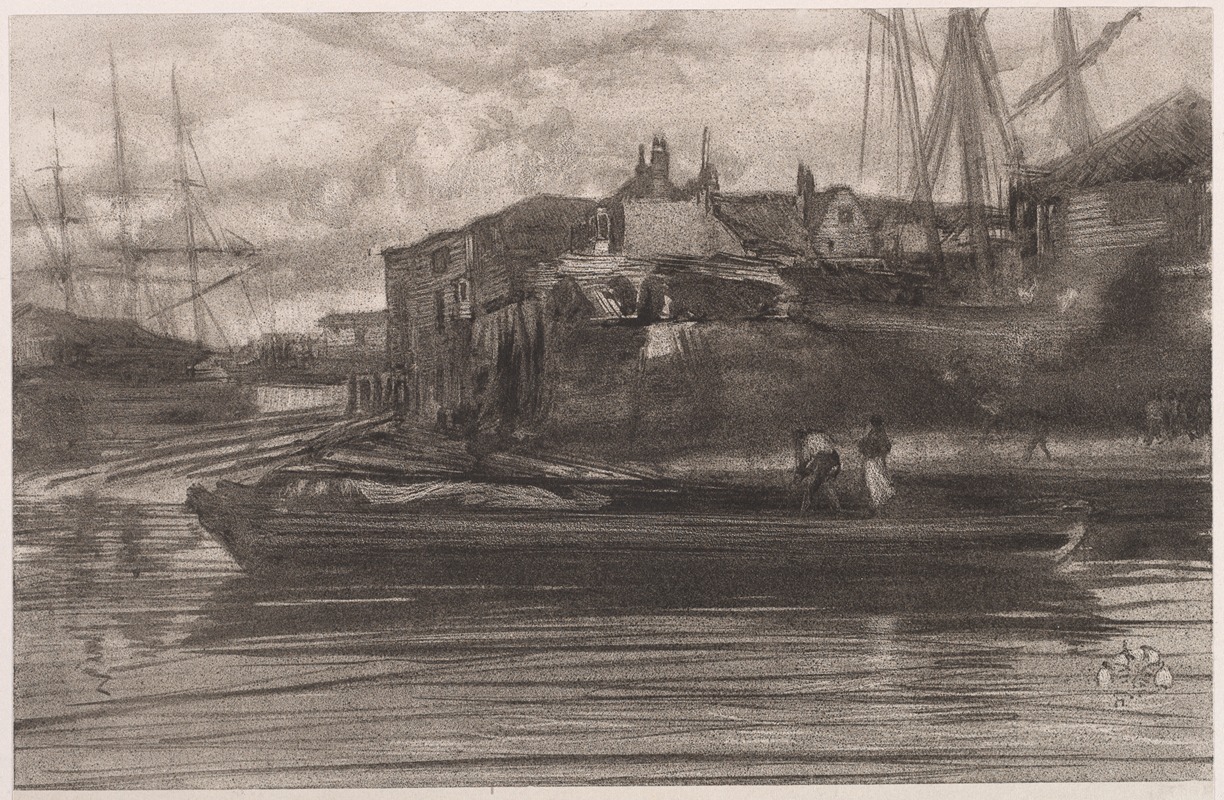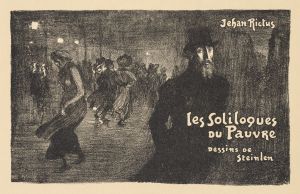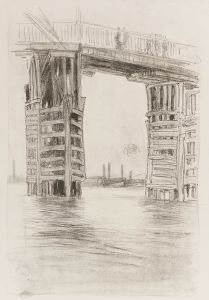
Limehouse
A hand-painted replica of James Abbott McNeill Whistler’s masterpiece Limehouse, meticulously crafted by professional artists to capture the true essence of the original. Each piece is created with museum-quality canvas and rare mineral pigments, carefully painted by experienced artists with delicate brushstrokes and rich, layered colors to perfectly recreate the texture of the original artwork. Unlike machine-printed reproductions, this hand-painted version brings the painting to life, infused with the artist’s emotions and skill in every stroke. Whether for personal collection or home decoration, it instantly elevates the artistic atmosphere of any space.
James Abbott McNeill Whistler's "Limehouse" is a notable work by the American-born, British-based artist, who is renowned for his contributions to the Aesthetic Movement and his influence on the art world in the late 19th century. Whistler, known for his innovative approach to art and his belief in "art for art's sake," often focused on capturing the mood and atmosphere of a scene rather than providing a detailed, realistic depiction. "Limehouse" is one such example of his work that embodies these principles.
"Limehouse" is part of Whistler's series of etchings known as the "Thames Set," which he created during the early 1870s. This series was inspired by the bustling life along the River Thames in London, where Whistler lived for much of his life. The "Thames Set" includes a variety of scenes depicting the river, its bridges, and the surrounding areas, capturing the essence of London's industrial and maritime activity during that period.
The etching "Limehouse" specifically portrays the Limehouse district, an area in East London known for its docks and maritime commerce. During the 19th century, Limehouse was a vibrant and diverse neighborhood, home to a mix of sailors, dockworkers, and immigrants. Whistler's depiction of Limehouse reflects his interest in urban life and the interplay of light and shadow, which he skillfully rendered through the medium of etching.
Whistler's technique in "Limehouse" demonstrates his mastery of etching, a printmaking process that involves incising a design onto a metal plate with a sharp tool. The plate is then inked and pressed onto paper to create the final image. In "Limehouse," Whistler employed a delicate and precise line work to convey the intricate details of the scene, while also using areas of shading to evoke the atmospheric effects of the London fog and the play of light on the water.
The composition of "Limehouse" is characterized by its focus on the architectural elements of the district, such as the warehouses and docks, as well as the figures of people going about their daily activities. Whistler's ability to capture the essence of the scene with minimal detail is a hallmark of his style, emphasizing mood and atmosphere over literal representation.
"Limehouse" and the other works in the "Thames Set" were well-received by critics and collectors, helping to establish Whistler's reputation as a leading artist of his time. These etchings were instrumental in showcasing his ability to blend technical skill with an innovative approach to composition and subject matter.
Whistler's work, including "Limehouse," has had a lasting impact on the art world, influencing subsequent generations of artists. His emphasis on tonal harmony and the aesthetic qualities of a work, rather than its narrative content, paved the way for modern art movements that prioritized form and color over traditional storytelling.
In summary, James Abbott McNeill Whistler's "Limehouse" is a significant piece within his "Thames Set" of etchings, capturing the essence of the Limehouse district in 19th-century London. Through his expert use of etching techniques, Whistler conveyed the mood and atmosphere of the scene, reflecting his broader artistic philosophy and leaving a lasting legacy in the world of art.


















